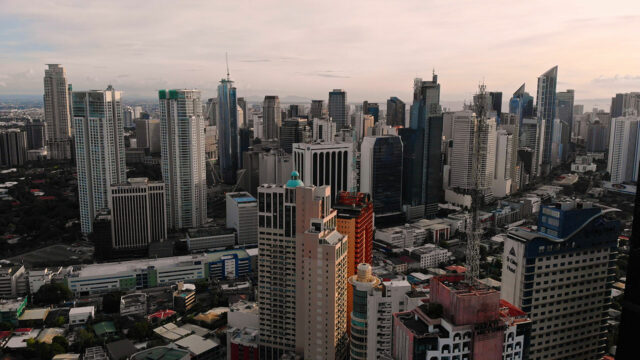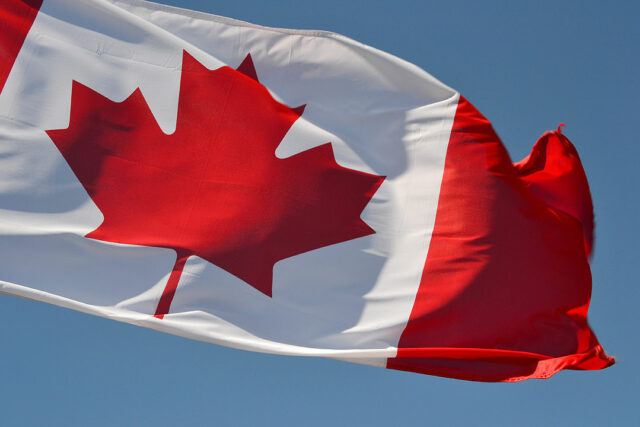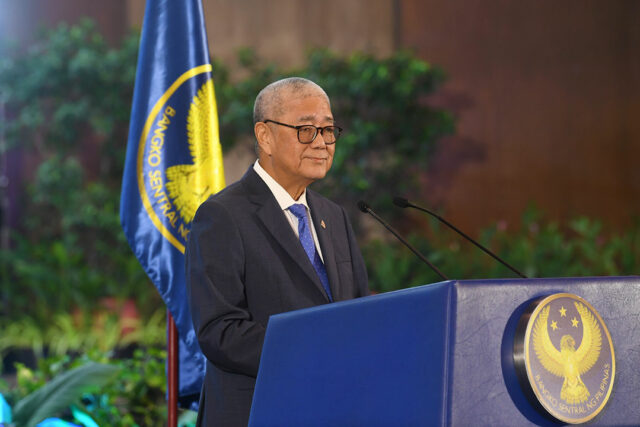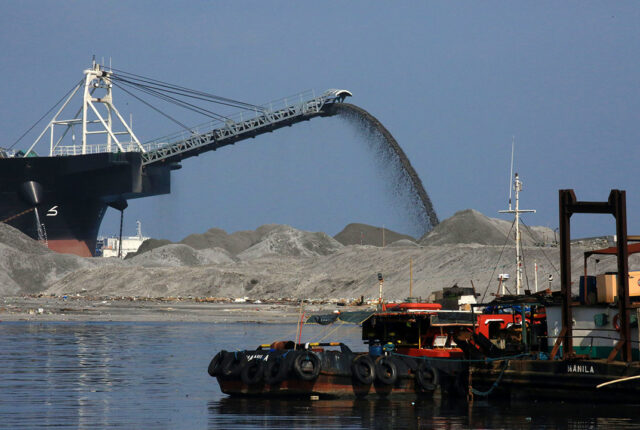By Keisha B. Ta-asan, Reporter
THE PHILIPPINE central bank is more likely to extend its policy pause for the rest of the year, analysts said.
However, a sharp depreciation of the peso due to the US Federal Reserve’s further tightening may prompt the Bangko Sentral ng Pilipinas (BSP) to resume its tightening cycle, they added.
Former BSP Governor Felipe M. Medalla on Friday said current Governor Eli M. Remolona, Jr. will be in a “tough spot” if the US Federal Reserve hikes borrowing costs again this September.
“The Philippines already has a large current account [deficit]. If the borrowing cost of the Philippines is the same with the US, people will prefer to put money in the US, including Filipinos,” Mr. Medalla told reporters on Friday, adding this would lead to the further depreciation of the peso against the US dollar.
He also warned that too much peso depreciation may cause a “backlash” on prices and wages.
The former BSP chief’s statement comes after the Monetary Board paused its tightening cycle for a third straight meeting on Aug. 17. This kept the benchmark policy rate unchanged at 6.25%, the highest in nearly 16 years. From May 2022 to March 2023, the central bank has raised borrowing costs by 425 basis points (bps).
The US Federal Reserve hiked by 25 bps last month to 5.25-5.5%, its highest level in 22 years.
A Reuters poll last week showed a majority of economists believe the Fed is likely done raising rates this year. The Fed’s next meeting is in September.
Security Bank Corp. Chief Economist Robert Dan J. Roces said the BSP is unlikely to tighten policy again this year, although a large rate hike by the Fed may force its hand.
“The main risk for the BSP to move higher, we think, is that if the Fed does so. This will narrow the interest rate differential and likely result in a sharp depreciation of the peso,” he said.
The peso closed at P56.18 on Friday, strengthening by 59 centavos from Thursday’s P56.77 finish. Year to date, the peso depreciated by 0.7% or 42.50 centavos from its P55.755 close on Dec. 29.
Bank of the Philippine Islands Lead Economist Emilio S. Neri, Jr. said a rate cut is “premature” in the Philippines due to the hawkish stance of the US central bank.
“It should be noted that the country’s trade and current account deficit remains wide, which means there is a fundamental tendency for the peso to depreciate. This makes the economy more vulnerable to any actions done by the Fed,” he said.
Based on central bank data, the current account deficit was at $4.3 billion in the first quarter, up from $4 billion a year ago. This is equivalent to -4.3% of gross domestic product (GDP).
The current account deficit is projected to reach $15.1 billion, or -3.4% of GDP, this year.
The wide current account deficit is also the reason why the foreign exchange market is “sensitive” to the interest rate differential, Mr. Neri said.
“It is very uncertain if the Fed is already done with its hiking cycle. Additional rate hikes are still possible given the tight labor market in the US and its impact on wages,” he said.
Meanwhile, Pantheon Chief Emerging Asia Economist Miguel Chanco said he sees BSP cutting policy rates by a total of 50 bps in the fourth quarter. If realized, this will bring the key rate to 5.75% by yearend.
“Inflation should fall below the key 4% mark in October, in time for the (Monetary) Board’s meeting in November,” Mr. Chanco said.
The BSP expects inflation to return to the 2-4% target band by the fourth quarter of 2023.
In July, headline inflation eased for the sixth consecutive month to 4.7%, bringing the seven-month average to 6.8%.
The Philippine economy may also lose momentum in the near term after GDP growth slowed significantly in the second quarter, Mr. Chanco said.
“Our base case is that the Philippines is undergoing a modest technical recession that should last until the third quarter, pulling full-year GDP growth down sharply to 4.5% from 7.6% in 2022,” he said.
Philippine GDP grew by 4.3% in the second quarter, its slowest growth in two years.
For the first half, GDP growth averaged 5.3%, lower than the government’s 6-7% target.
Despite the slower economic growth, Mr. Neri said rate cuts are still premature.
“The recent drop in GDP growth can be attributed mostly to government underspending, which shaved off 1.3% from growth. If government spending did not contract, the economy would have grown by at least 5.5% in the second quarter,” he said.
Mr. Neri said addressing government underspending will bring economic growth close to 6%. This will reduce the need to cut interest rates in order to boost the economy.
“It is also premature to cut interest rates at this point given the upside risks to inflation. It should be noted that inflation has been above the target of the BSP for almost two years already,” Mr. Neri said.
July inflation marked the 16th straight month that inflation breached the 2-4% target.
“A longer period of above target inflation may affect the BSP’s credibility as an inflation targeting central bank, which in turn may limit their ability to control inflation,” Mr. Neri said.
Last week, the BSP cited several upside risks to the inflation outlook such as supply constraints on key food items, impact of likely higher transport and wage adjustments, and the effects of the El Niño.
“Although we agree that the inflation path is tilted to the upside, we do not see the BSP hiking anymore this cycle as inflation is still bound to come down to the BSP’s target in November (our previous estimate was October),” China Banking Corp. Chief Economist Domini S. Velasquez said.
The BSP slightly raised its average inflation forecast for 2023 to 5.6% (from 5.4% previously) and 3.3% (from 2.9%) for 2024, respectively. It also hiked its 2025 inflation forecast to 3.4% from 3.2%.
The BSP is next scheduled to discuss policy on Sept. 21, Nov. 16, and Dec. 14.

















